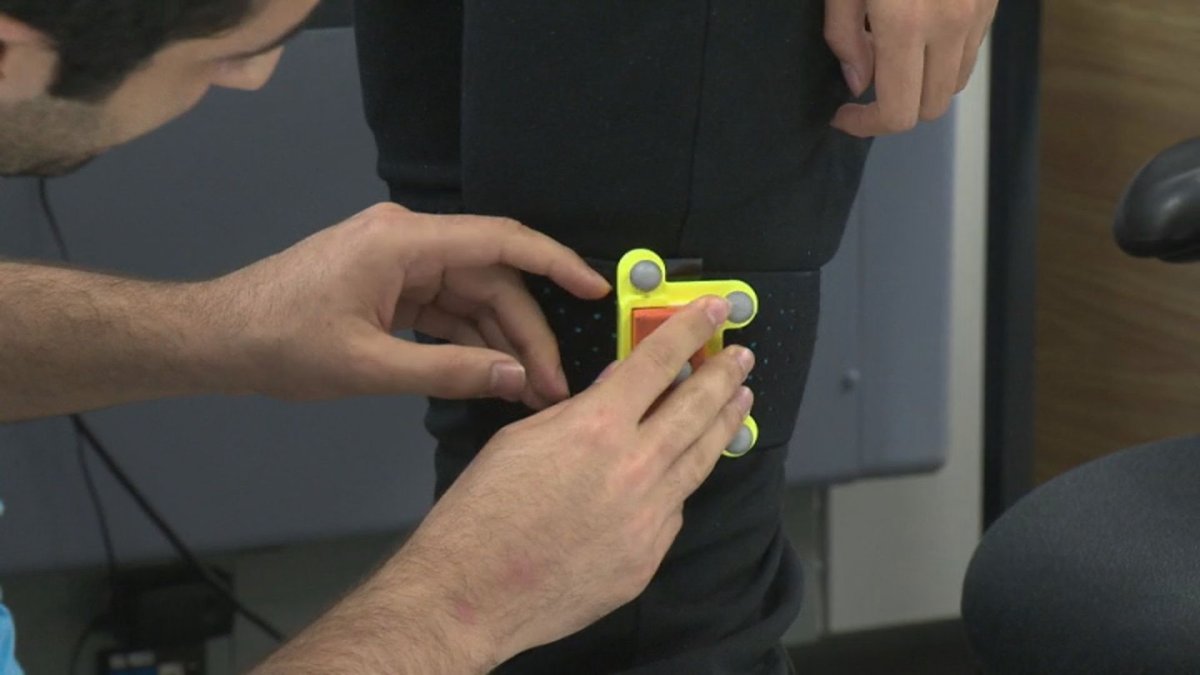A team at the University of Alberta is developing high-tech wearable sensors that can precisely track people’s movements and provide feedback on how to improve them.

“We started this project with rehabilitation applications,” assistant professor Hossein Rouhani said Wednesday, “for example, walking, standing or other typical daily activities.
“After a few years, we decided that, in addition to helping patients, we can help athletes.”
Rouhani, an instructor in mechanical engineering, also runs the university’s neuromuscular control and biomechanics laboratory, where the wearable sensor system is being created.
Matchbox-sized sensors are embedded in athletic gear — from boots or skates to pads and helmets — and provide analysis of each athlete’s individual performance. Then, coaches, physiotherapists or medical staff know where improvements need to be made and how injuries can be avoided, including adjustments to joint angles, lower limb motions, motor control, movement patterns and speed.
“If we can measure precise movement patterns of professional, advanced-level athletes, and then we can measure, at the same time, movements of beginner athletes — if we can compare these precise, animated movements together, then that can be objective feedback to the beginners to know how they should change the movement patterns,” Rouhani said.
The system has a second feature — augmented reality goggles — which means the athlete can receive the feedback personally and make any necessary adjustments themselves.

Get breaking National news
“All the devices are wearable and, in this way, the users can keep track of and improve their motions without others’ assistance, only by themselves.
“The goggles can show the instructions, the correct motions for them, and they can correct for themselves immediately,” explained computer science researcher Michael Xiu.
Xiu, a 20-year-old undergraduate student at China’s Sun Yat-sen University, is leading the U of A project as part of the Mitacs Globalink internship.
Watch below (Feb. 1, 2018): UBC researchers have developed wearable tech to help high-level athletes monitor their physical performance. As Sophie Lui reports the developers think this will give athletes that extra push.

Xiu is developing a custom software application that will allow coaches and therapists to assess athletes’ motions on a monitor or in 3D while wearing the special goggles. The technology is being tested inside the lab right now but the team plans to give it a test run with the university’s sports teams next year.
The ability to use the sensors outside a motion-capture lab is a big advantage, Xiu said.
“In the past, if you want to track our human motions, we require… many cameras around, but many outdoor activities cannot be performed in such a limited space.
“So, with our wearable technologies, we can precisely track these human motions without limits of space.”
“Wearable technologies create a significant opportunity for athletic performance evaluation in the field and recording the actual and natural performance of the athletes, which can go a long way in helping to put Canada on the international athletic map,” Rouhani agreed.
Hockey was the first sport the team tried the technology on but they believe it can be easily applied to others.








Comments